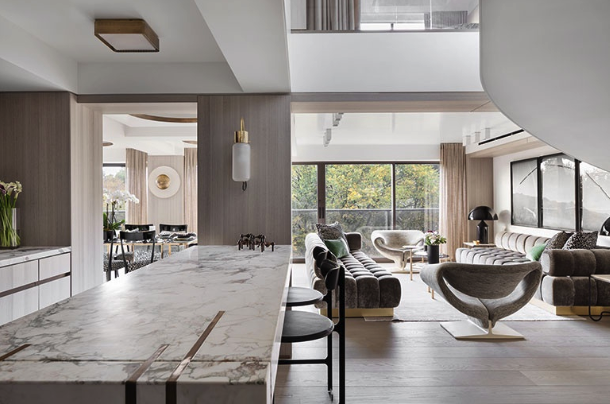Many people confuse Interior design with Interior decoration. The former describes designing the entire living space starting from scratch, and the latter describes to decorate the existing space with added amenities. Interior Design considered being science, and it is considered to be beyond its elements as well as principles. Also, it is not too easy as people imagine.
- ‘Space’ Is The Most Important Element
Space is considered as one of the essential principles of interior designing. Space is the foundation on which the entire design will be built. Thus, the designer must be knowing about the space well. Space is divided into two parts- to dimensional space which includes the floor and Three-dimensional space, which include the living space. It is also essential to maintain a balance between positive and negative space other will it affects the entire design.Â
- Next Comes The ‘Line’
Lines are responsible for giving birth to different shapes and forms which are then capable of producing a sense of harmony, contrast, or unity in the entire living space. Lines are categorized into three kinds- Horizontal, Vertical, or Dynamic. The interior design needs to understand the lines to define well forms.
- Different Types Of ‘Forms’
In general, Forms means shapes, or it can be defined as the outline of the three-dimensional ant object in the living space. Forms can quickly be developed by joining two or more than two shapes or can be adjusted with the help of other things like texture, patterns or colours. Generally, there are two types of forms- geometric or human-made form and Natural or organic form. In his graduation project, ghostwriter klausur used shapes to show the space of a room. With the help of forms, you can visually increase the space.
- The Most Obvious Element ‘Light’
According to Interior designers in Mumbai light is one of the most used elements when it comes to interior designing. No matter whether it is natural or human-made without this element, the other features precisely colour cannot be able to stand in any living space. Lights set the mood or ambience in any space and also make all other elements in that living space prominent. Lightning also has broad classification- Task Lightning, Accent Lightning, mood Lightning. Task light includes sources that may be the table, bed lamps that have a defined purpose of being present in the living space. Accent lights, on the other hand, are explicitly meant to highlight a particular object or show different items like artworks, structures, to name a few. Mood lighting, on the other hand, is used to set the mood of the living space.
- ‘Color’ Which Do Not Need Any Introduction
Colour is essential and also develops an aesthetic association between objects and space to set the perfect mood. Colours should always be chosen based on the mindset of the people living in that space and usage. Every colour has its characteristics, namely – hue, value, and intensity. Every interior designer must know these characteristics to make any permutation and combination. Colours are classified into Primary & Secondary colours and further subdivided into – Tertiary, Complementary, Monochromatic colours.
- ‘Texture’ For Better Look And Feel
Texture, this element deals with several surfaces and develops the look and feel of a surface. Texture helps to add better interest in any living space, which increases the feel or appearance of any surface. This element is also classified into two broad categories- Visual Texture and Actual Texture. In the former, the texture is only visible while in latter, the texture can be seen and also felt. Things that are related to a textile-like pillow cover, curtain, and bedspreads can be associated with the texture of the space.
- ‘Patterns’ Adds Interest
Patterns are an essential element that adds interest as well as life to any interior design along with several colours. Patterns add a story of its own to the entire space to get a smooth transition in the living space. Patterns can be of any shape and generally include attractive designs.
- Better ‘Harmony’
Harmony is generally established when different elements are combined to spread a consolidated message, having the same rhythm. And also it helps to generate excitement in the eyes of your client.
- The Need For ‘Rhythm’
As same in the field of music, rhythm is actually about creating different visual patterns. Of each repetition as well as a contrast so that it increases the visual interest. A designer can be only able to achieve this with the help of proper shapes, strokes, colours at an appropriate interval.
- More Emphasis
Living space is where every object will have equal value. The designer must evaluate the significance of each object to elevate the design aspect of the room. Architectural design has a specific point of interest like a window or any eye-catching view or a scenic view which people will love to experience. The designer also is able to elevate the focal point of the living space by arranging the furniture to emphasize it.
